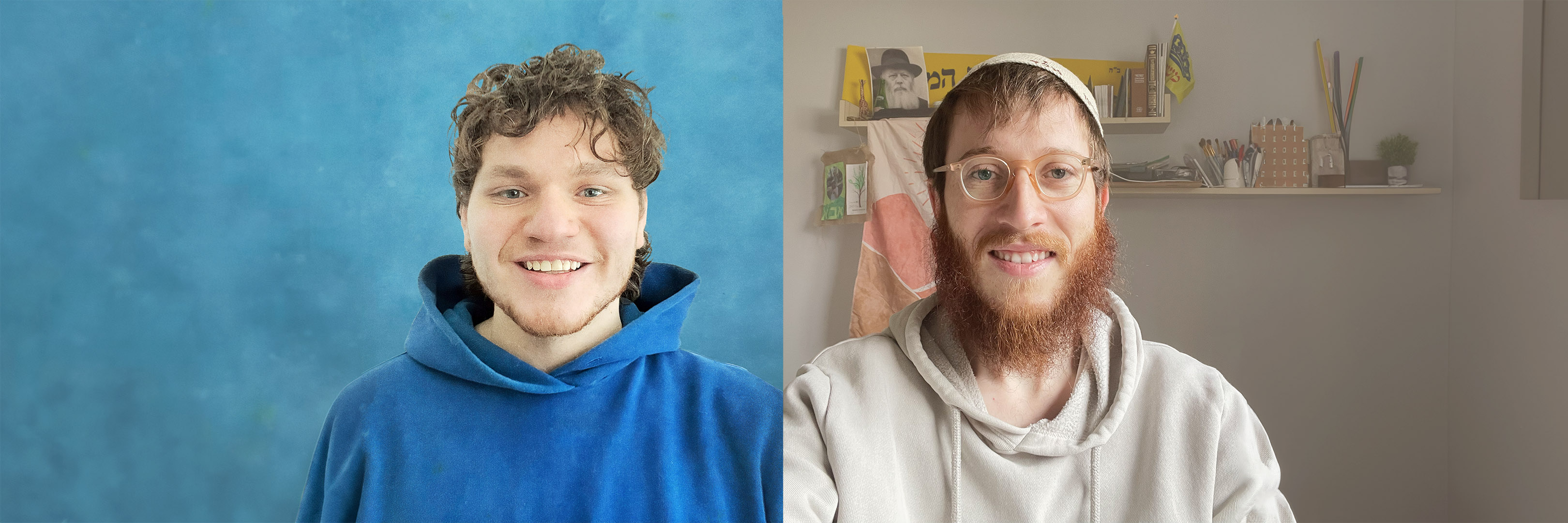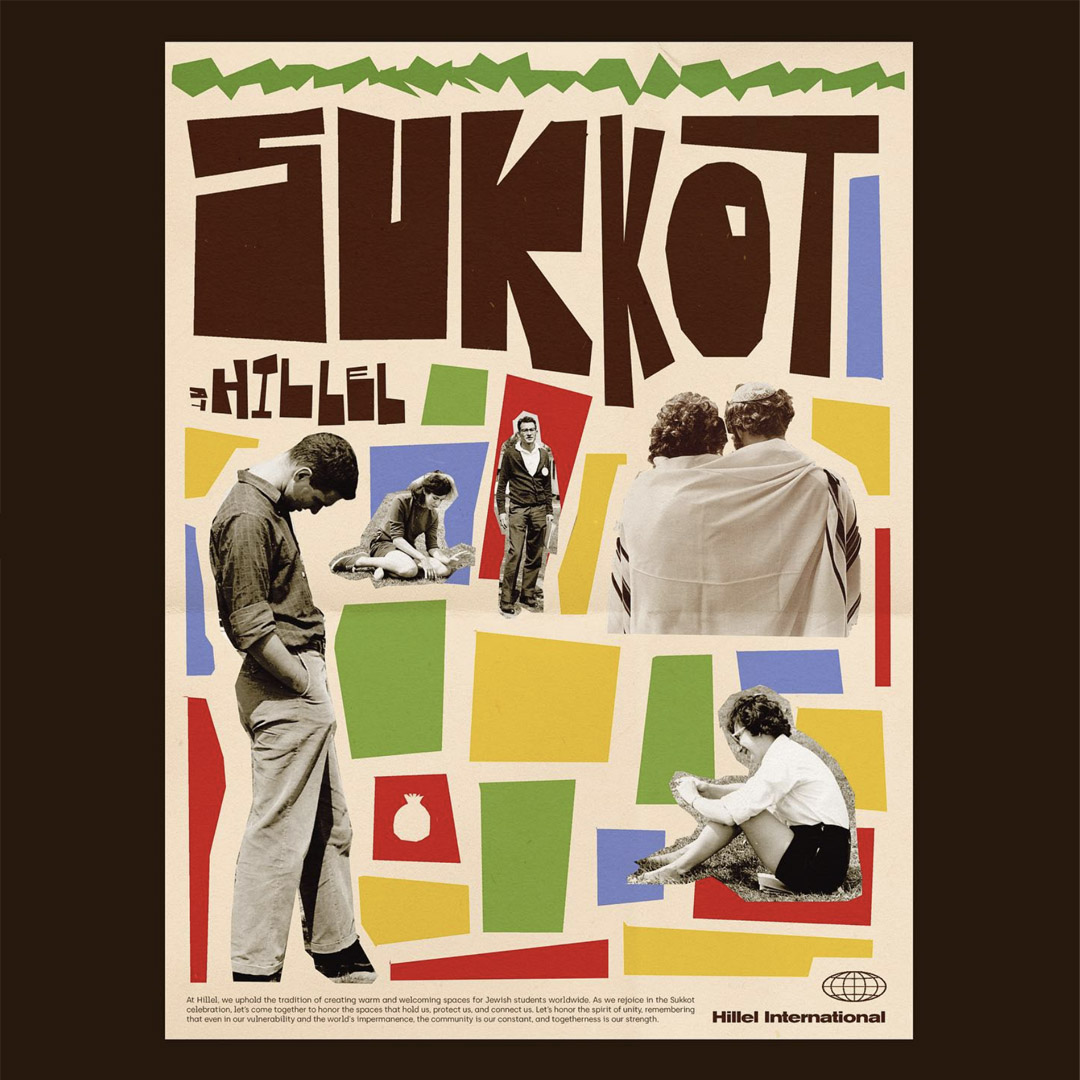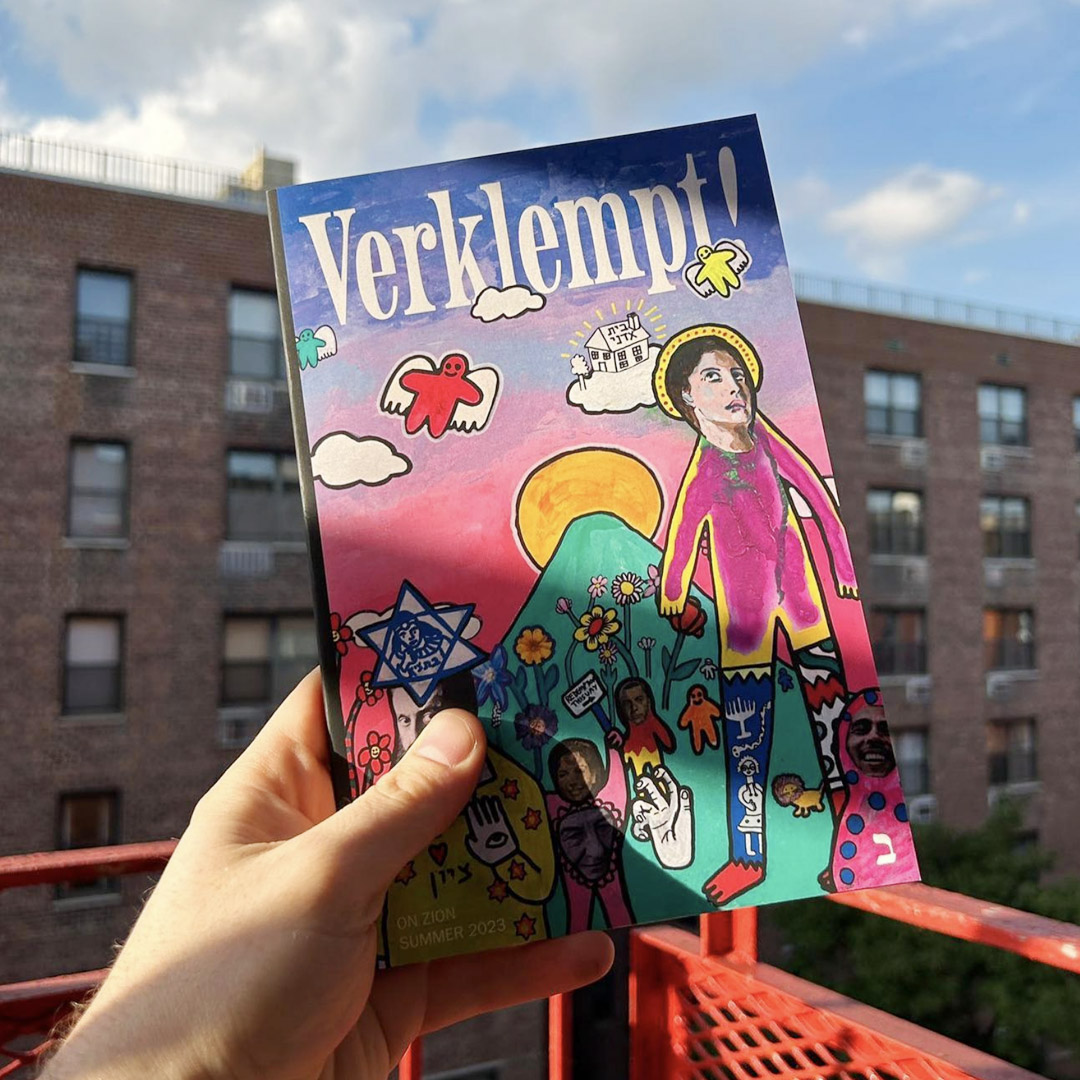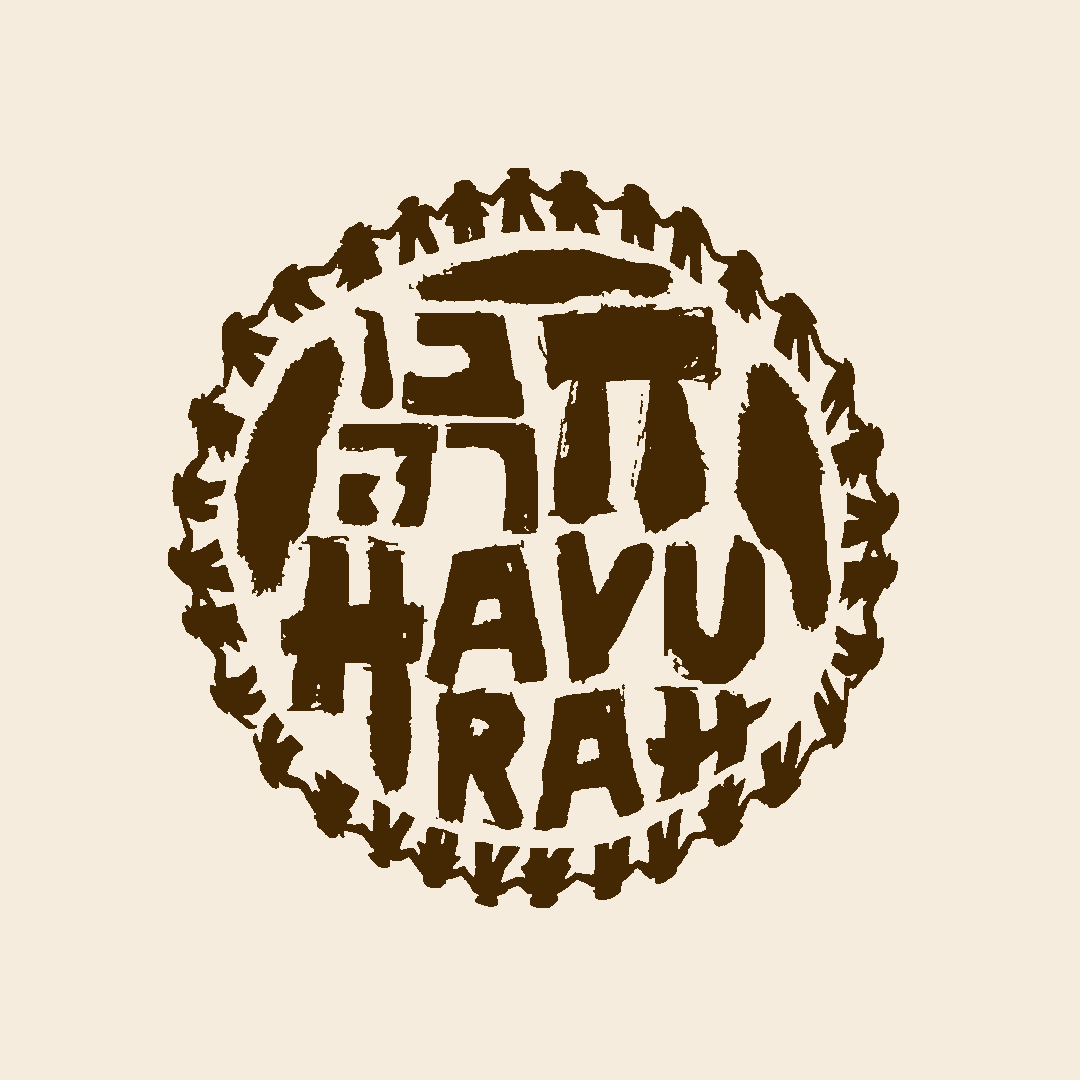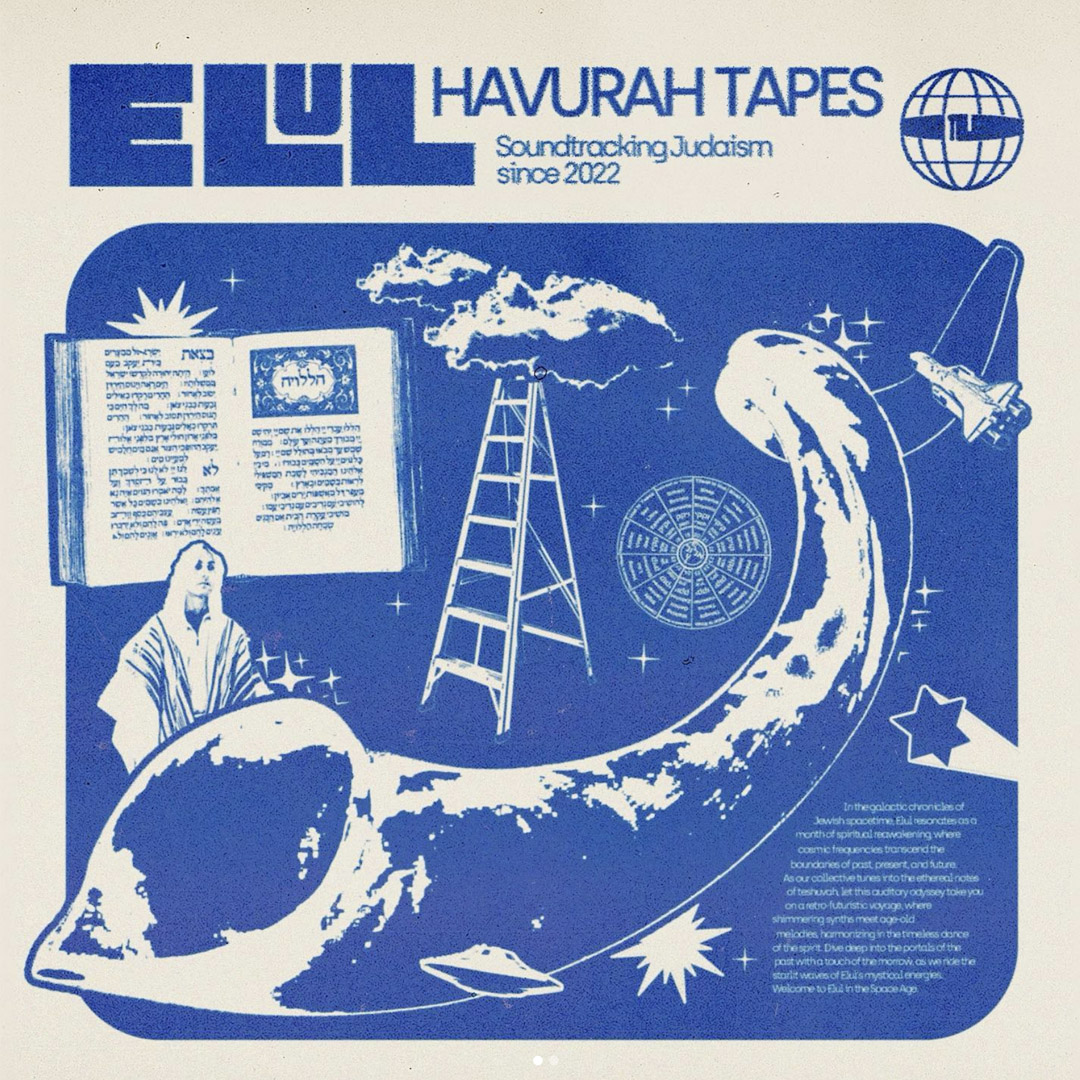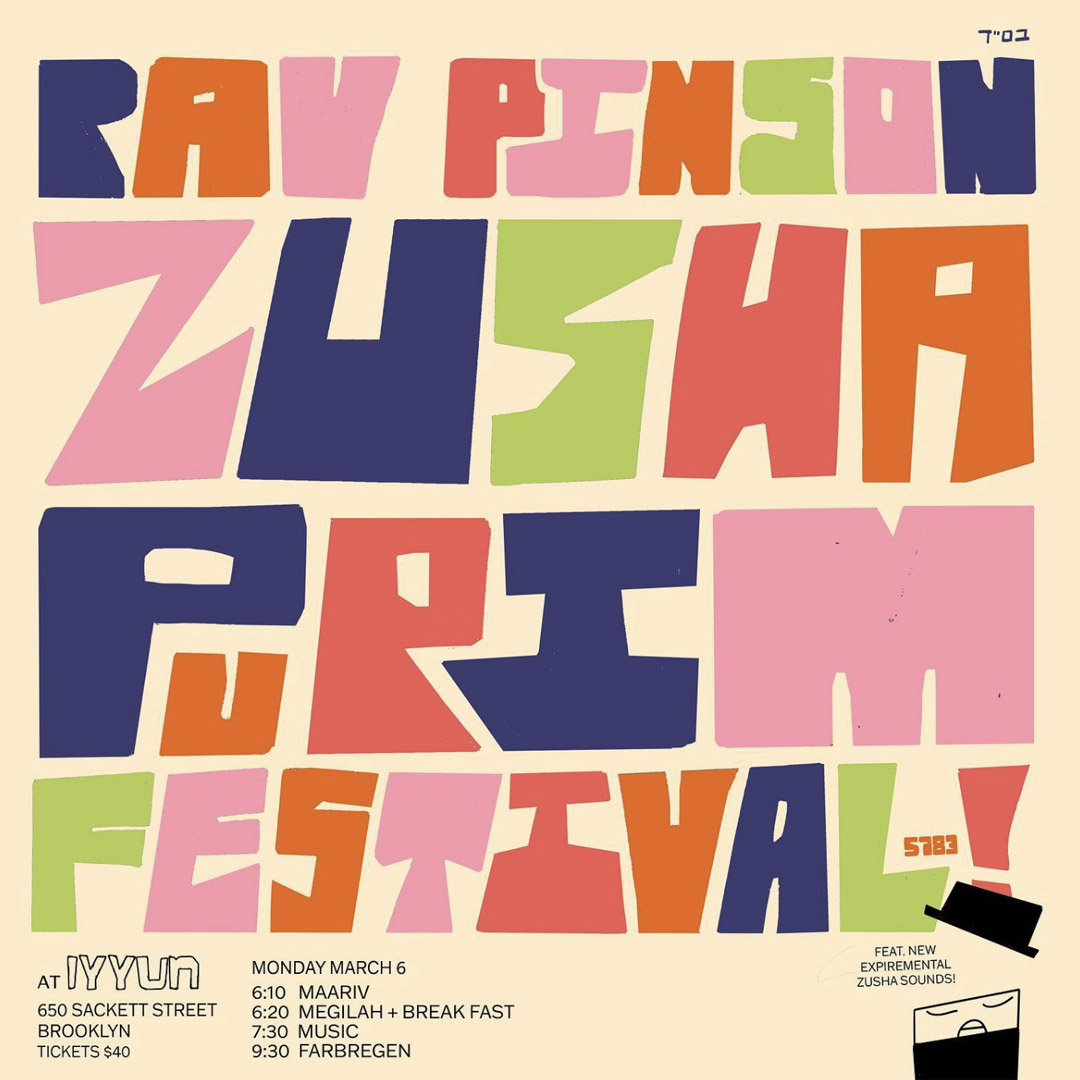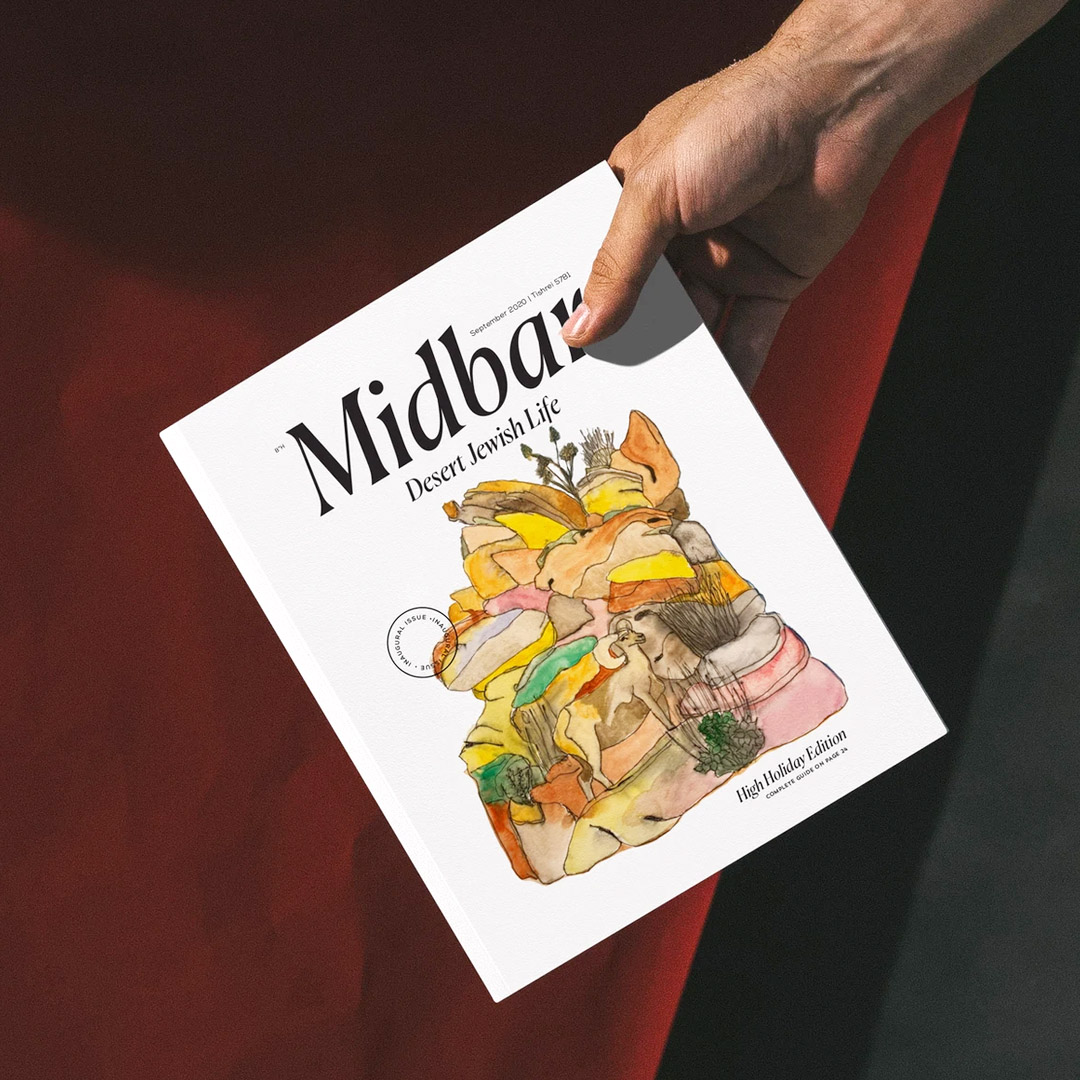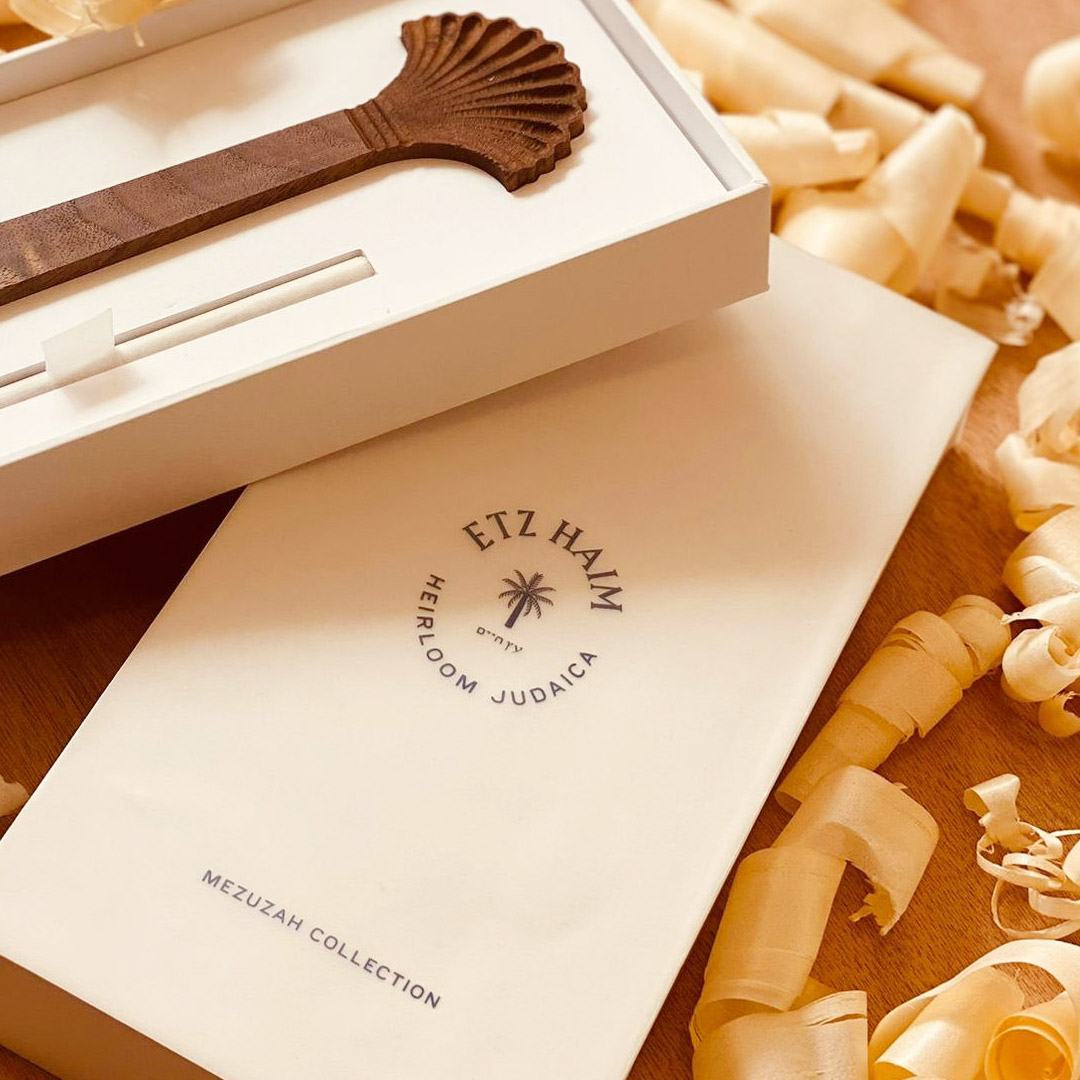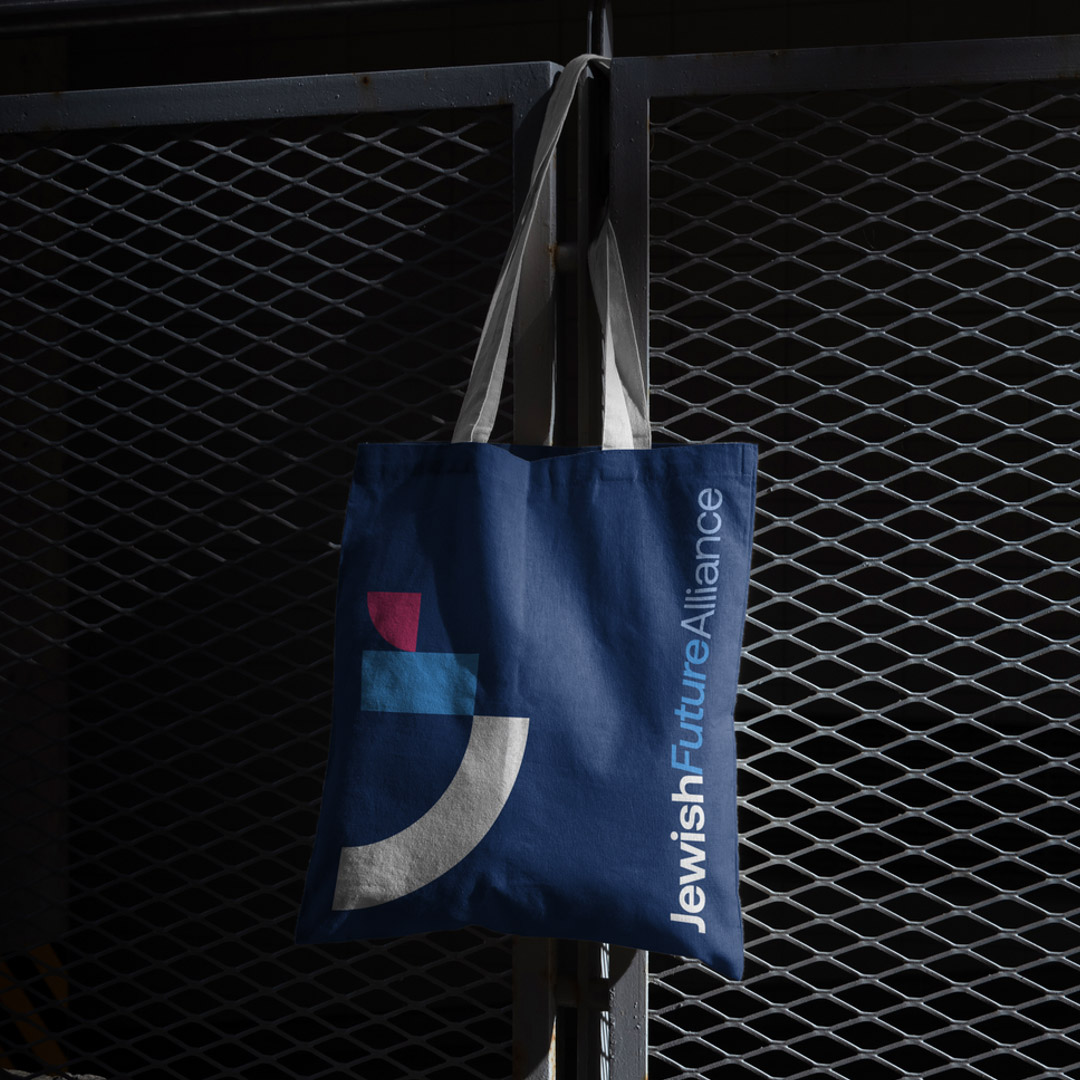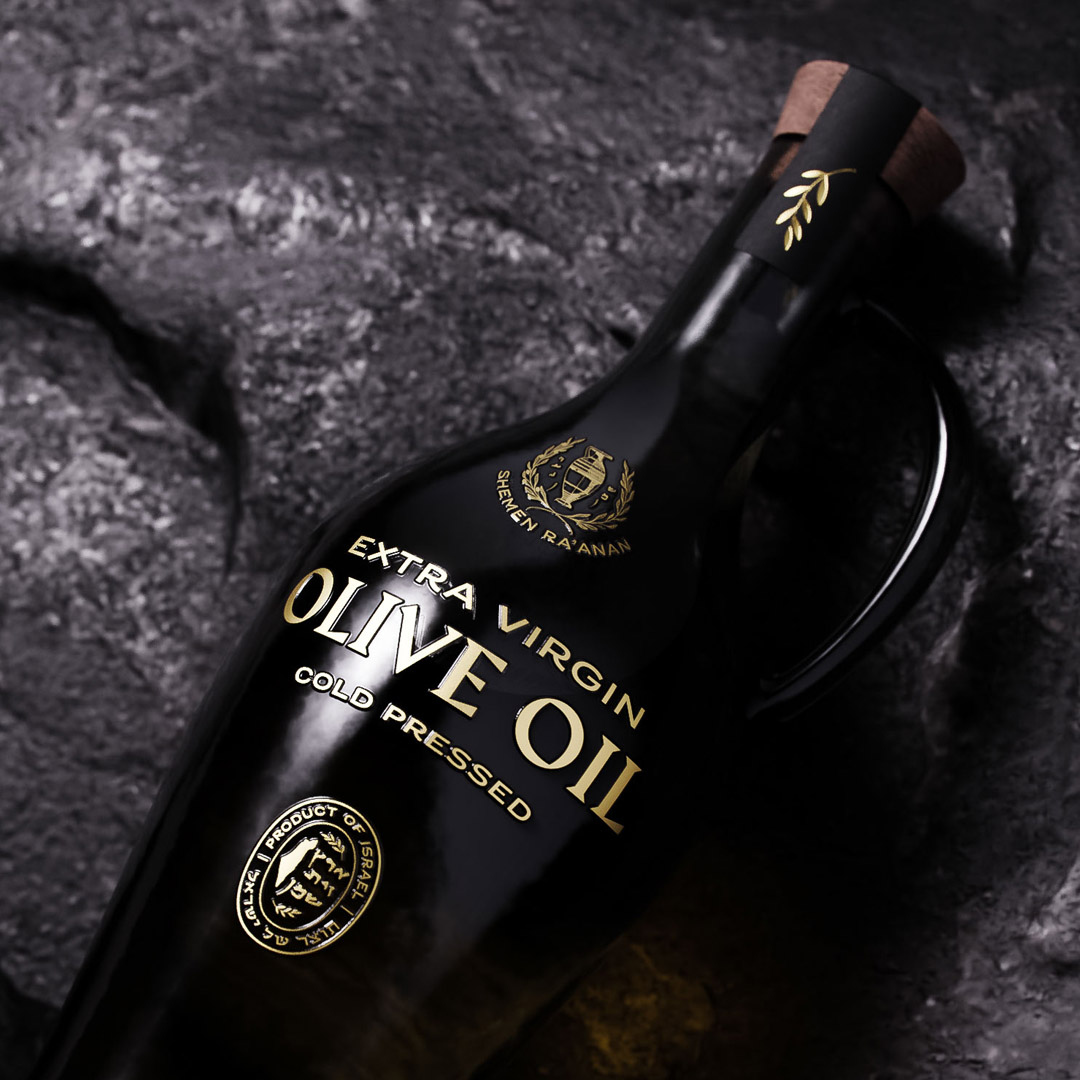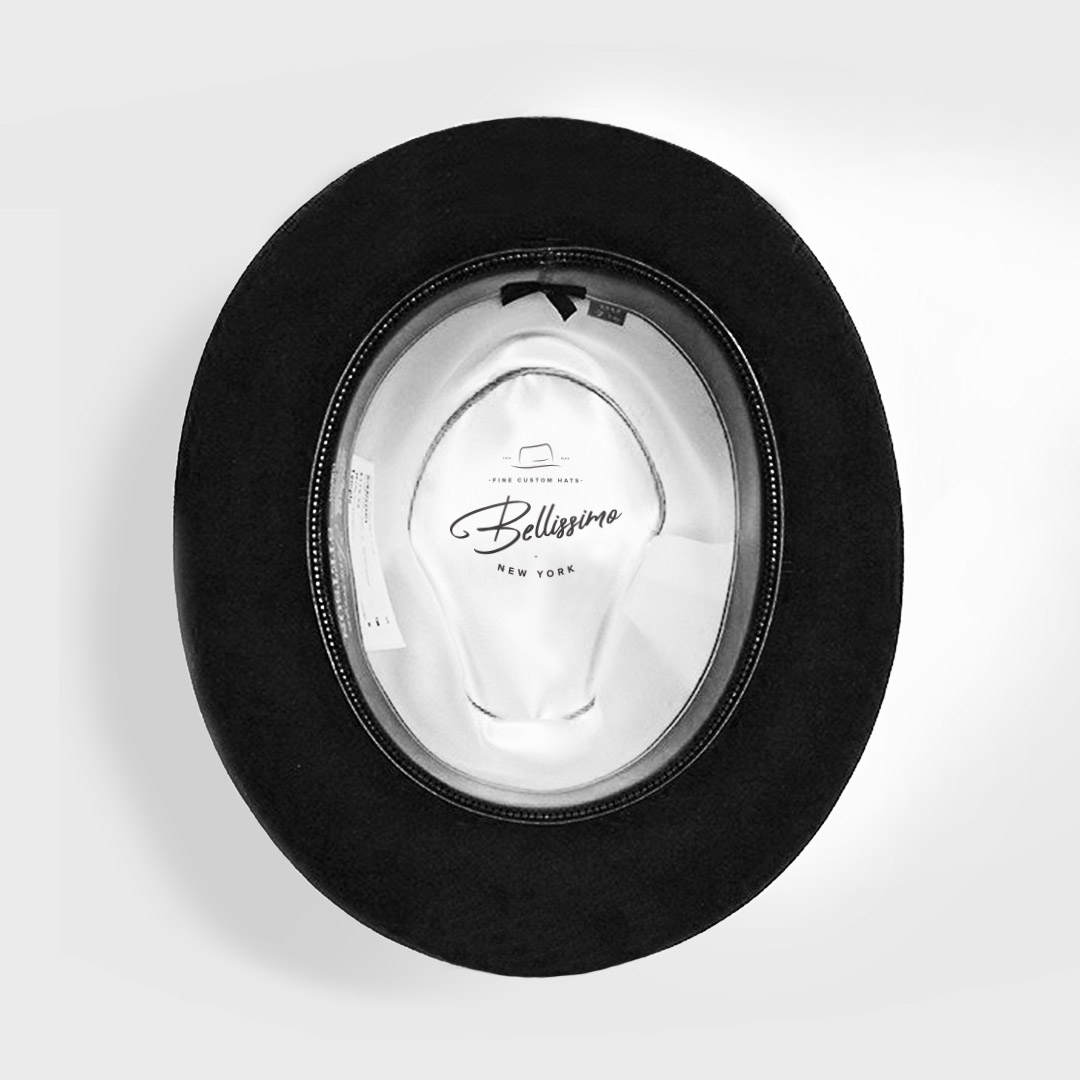Eitan Gutenmacher
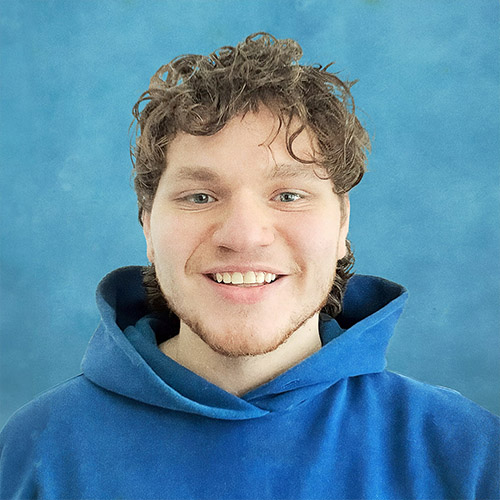
New York-based designer Eitan Gutenmacher is a full-time student at New York University, co-founded Havurah and art director for New Zionist Congress.
Growing up in New York in a Modern Orthodox environment, Eitan’s exposure to design was limited between home and school – until the Internet gave him a head start. He started selling sticker designs on Fiverr and made a name for himself on the platform, later teaching himself Photoshop in high school. During a design internship, he realised he was interested in pursuing a creative career. “I applied to NYU because there were a lot of things I wanted to learn as well as art,” he says. After a year in Yeshiva in Jerusalem, he returned to New York to start university. “I looked at the syllabus of the design classes, and it was very simple stuff, so I decided to do design through commissions instead.” Eitan’s design practice has since grown organically, teaching himself through client projects while he explores different mediums at university.
Eitan founded Havurah in 2022 as a spiritual movement to showcase and celebrate Jewish art. “Visuals have such an imperative function for people,” he says, “whether that’s for religious or cultural expression.” Eitan believes design can be used to empower a community, but Jewish Americans have been lacking a visual identity. “I think Jewish life in America has a huge gap – there are so many platforms speaking up against Antisemitism, but almost none of them take design seriously.” It’s in this context that Eitan, inspired by Jewish and Israeli references throughout history, looks to change that through a creative, positive-led approach. Havurah, as well as his own work, reexamines what a Jewish aesthetic in America means today – an identity he notes has become a stronger, more unified presence.
“Everything I’ve done recently has been for the Jewish community”, Eitan shares, adding that he’s recently worked with Jewish band Zushe – his biggest commission yet. His graphic work for both Havurah and New Zionist Congress uses bold hand lettering and illustration, designed to bring a youthful, contemporary energy to their platforms. His inspiration spans from the art of Dan Risinger to New York jazz posters, bringing a mid-century feel to his style. Eitan would love to work more with Hebrew, he explains, but until he has a stronger grasp of the language he’s hesitant to use it in his artwork. “Israel has such an incredible design community, and I don’t want to step into that when I’m not ready for it,” he says. He hopes to study and maybe one day live in Israel where he can incorporate Hebrew into his art which feels less “diaspora-based” – “In Israel it’s so fundamentally different – something like Havurah is not really needed in Israel."
You can follow and view Eitan’s work on his Instagram.
Sholom Denebeim

Across the country in Palm Springs, California, LA-based graphic designer Sholom Denebeim of Minty Creative similarly combines Jewish themes into his design practice, working across branding and web design.
Sholom grew up in the sunny resort town of Palm Springs where his parents had relocated to through Lubavitch. Because the Jewish school there only went up to 8th grade, Sholom chose to continue his education online. “The computer had Photoshop on it,” he recalls, “And because I was always using a computer, my parents would ask me to help with the Chabad website, and sometimes flyers. I kind of figured things out, and that was my first foray into design.” It was later when studying at a Yeshiva in Tzfat, Israel that Sholom considered a career in design. “I thought of using design to make an income after Yeshiva, so I wanted to get ahead. I rented an office there and started reaching out to people.” Through word of mouth, Sholom grew a business that he could bring back to California, and it hasn’t stopped since.
Many of Sholom’s projects are through or related to the Jewish community, and bringing his experience of design and strategy to them is especially rewarding. “I connect to projects that would be geared towards me, or for outreach to help other people – I’m definitely more passionate about those.” His design work with Jewish study app Chayeinu, for example, brings a clear and accessible approach to daily learning. For many Jews in the US, reading Hebrew is a mixed ability – often, it’s not included in design work he sees around him. Sholom notes, “I definitely think it’s important to use Hebrew, and for Jews in America to learn the letters and connect with them.” Both in and out of his design work, the mission of outreach is extremely meaningful to him, so working in Hebrew is especially important to his creative practice.
A selection of Sholom’s projects feature Hebrew, ranging from posters to educational material. Whether that’s typesetting in InDesign or experimenting with calligraphy, his skillset and familiarity with Hebrew is a growing interest which he’d love to spend more time on. “With the study apps, it was a bit of a learning curve,” he admits. “Even though I use a siddur everyday and I can read Hebrew text, it needed to look different scrolling through it on a phone.” A feature piece of Hebrew lettering by Sholom was album artwork for Zushe, mixing brush lettering with funky type styles. It was an opportunity to explore “imperfect” handmade type that’s always inspired him. And his love for Hebrew type could even extend to a font one day: “I really like old European Hebrew fonts used for Yiddish – I’d love to work on a font based off old signage. That’s on my wish list!”
You can follow and view Shalom's work on his Instagram and website.

